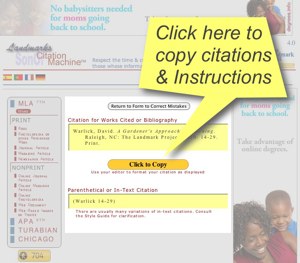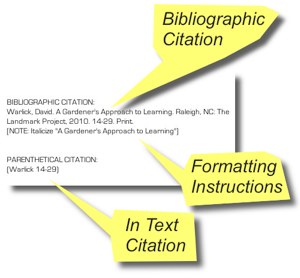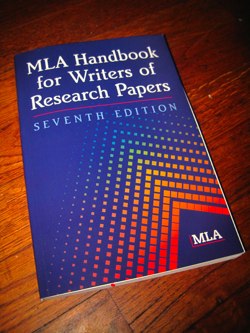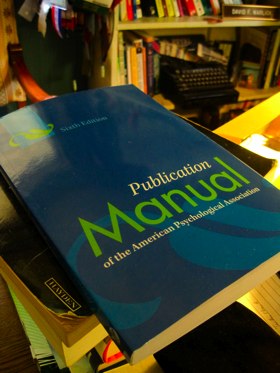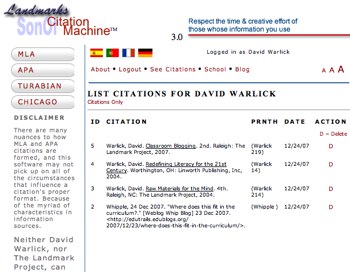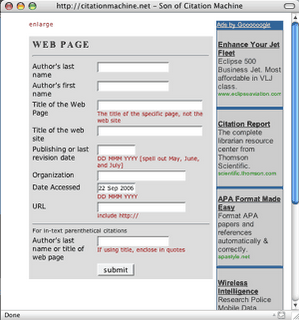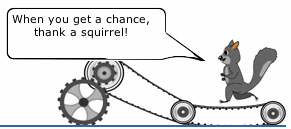 You’ve noticed, no doubt, that I made some changes to the design of Citation Machine. My intent was to make the changes as minor as possible while making its operation as simple as possible. I realize now, after many e-mail queries and complaints that although I maintain that the design is simpler, I have also changed the process a little more extensively than I’d assumed.
You’ve noticed, no doubt, that I made some changes to the design of Citation Machine. My intent was to make the changes as minor as possible while making its operation as simple as possible. I realize now, after many e-mail queries and complaints that although I maintain that the design is simpler, I have also changed the process a little more extensively than I’d assumed.
So here, I’d like to post some of the questions I’ve gotten and the answers I have returned. This may be viewed as something of an FAQ for Citation Machine (next number up).
- For the APA format does not show options such as printed book, non print magazine article etc
- There is no resource list for me to click ! Just some silly memory of my recent usages. Who cares?
One of the goals of the new CM design is to simplify its operation. Therefore, I have combined print and non-print. When you select APA Journal, there is a place to enter a Web URL or digital object identifier. If the document is print, then those textboxes are left blank, and the citation is formatted as print. If a URL or DOI is entered, it indicates a digital or some other type of non-print document, and the citation reflects a non-print source. The result is that the list of sources to select from is shorter – by half.
I’ve gotten quite a few similar notes, but when seen how the new design actually works, people are fairly pleased. My goal is simplifying the usage, specifically cutting down on the amount of scrolling you had to do previously in order to find the source you want to cite.
Today, the styles are at the top. You simply click the tab for APA, and a source panel appears. Click the source you want, and it will remain in your “Recently Cited” tab on the left.

